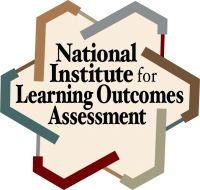Description
This assignment involves application of skills and knowledge related to ethical reasoning, and could also be used to assess ethical reasoning outcomes related to decision-making. The associate’s level ethics curriculum at Golden Gate University aims to prepare career-minded, adult students (the average age of our students is 34) to treat more specific ethical problems and issues faced in the workplace and life. Hence, the application of ethical concepts, principles and theories in decision-making is our primary concern.
Background and Context
The assignment from Golden Gate University is intended to assess the following associate’s level Applied Learning Outcome for which a rubric is attached:
- Describes in writing at least one case in which knowledge and skills acquired in academic settings may be applied to a field-based challenge, and evaluates the learning gained from the application using evidence and examples.
The assignment involves application of skills and knowledge related to ethical reasoning, and could also be used to assess ethical reasoning outcomes related to decision-making. DQP ethical reasoning outcomes are most especially focused on analysis of prominent ethical issues and problems in society, arts, sciences, and the professions. The associate’s level ethics curriculum at Golden Gate University aims to prepare career-minded, adult students (the average age of our students is 34) to treat more specific ethical problems and issues faced in the workplace and life. Hence, the application of ethical concepts, principles and theories in decision-making is our primary concern. The ethics outcomes and the rubric used in assessment at Golden Gate are adapted from the most current AAC&U ethical reasoning rubric with some modifications.
A separate assignment is used to assess ethical reasoning at Golden Gate, and functions in crucial ways as preparation for the applied learning assignment. The applied learning outcome involves evaluation of learning gained from the application of concepts and theories, which requires reflection that goes beyond analysis and evaluation of moral issues in decision-making. The reflections included in this assessment, and in supplementary assignments, serve as final exercises in student self-examination that, it is hoped, will promote retention and practice of the skills and knowledge developed in the course.
Reflection
Reflection assignments, like those in the last part of the assignment presented here, have been used in the past. But this particular assignment (pre-assignment and three part applied learning) has been tested only once in the spring of 2014. There were three challenges with the assignment that will be addressed in future iterations.
- Students generally do not have the ability to identify and describe key moral issues that will allow for the kind of rich analysis and reflection the assignment requires without guidance and feedback. Hence, a pre-assignment is given early in the class. The instructor provides feedback on the student’s initial effort and attempts to guide the student to a framing of a moral issue or problem that both has keen relevance to the student personally as well as depth of content. Some students are shy about sharing their thoughts and feelings; others simply do not know how to do it. These obstacles tend to make the assignment labor intensive for the instructor. And some students fail to frame a problem that is suitable for the assignment.
Possible solution: Providing some initial limits and guidance on the issues and problems to be selected by the student may help in this process. In the next pre-assignment we may present students with examples of professional and personal problems and use these examples as prompts: students will be asked to reflect on whether or not they have been face with these kinds of problems or similar ones. The examples will be used as guides in the selection and development of moral problems meaningful to the student.
A similar strategy could be used in the pre-assignment for courses that focus on prominent ethical issues, like those suggested in the DQP. Students might be presented with a range of important issues; then students would be asked to select an issue that is meaningful to them and outline where they stand and why.
- Reflection in the third part of the assignment was difficult to achieve. In future iterations examples and further class discussion on how to evaluate learning gained from applying moral concepts and theories to a case may be used to help students generate these kinds of reflections.
- Teaching how to apply moral concepts and theories to cases is always a challenge. Case studies, exercises and guidance in class discussion are provided in course activities that are scaffolded, and these have been effective. But development of diverse learning tools, especially for an online course, and the skillful scaffolding of activities, are best practices and require constant monitoring and revision.
Please select an option
The assignment library and the assignments within are licensed under a Creative Commons Attribution 4.0 International License. By clicking “Ok” you agree to cite each assignment (including modifications), with the provided citation on the assignments downloaded from this site.
OK

